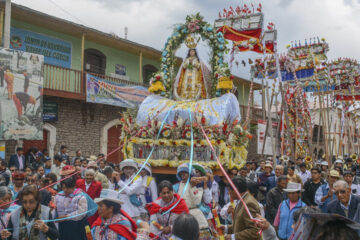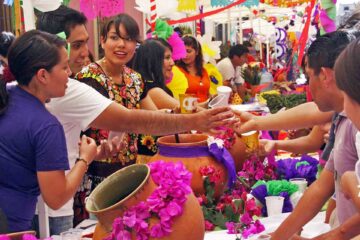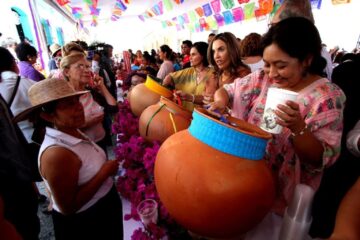Experiencing Semana Santa in Mexico: A Tradition of Faith and Family
Every spring, families across Mexico prepare for one of the most important religious and cultural traditions of the year — Semana Santa in Mexico, or Holy Week. This special time begins on Palm Sunday and ends on Easter Sunday. For many Mexicans, it’s not just a religious holiday, but a time to come together as a community, reflect on their faith, and pass down traditions from generation to generation.
Growing up, I always heard stories from my mom about how Semana Santa in Mexico was celebrated in her small rancho, Ojo Seco, Guanajuato. Compared to the way we celebrate Easter here in the U.S., it felt like a whole different world — one full of deep traditions, processions, and a real connection to faith.
A Deep Connection to the Church
In Ojo Seco, Semana Santa in Mexico is taken very seriously. My mom often tells me how her grandmother, my great-grandmother, was very involved in the Catholic Church. She helped organize the celebrations every year and made sure everyone in the rancho stayed connected to their faith during this special time.
What’s really special is that my great-grandmother’s house was actually connected to the side of their little chapel. Can you imagine waking up and stepping right into church? For my mom, that was just part of life. Their family was known for being very active in the church, and Semana Santa was the most important time of year.
They would gather every night leading up to Easter, praying and preparing for the processions that would fill the streets. Everyone in the rancho took part — young and old — dressing up, carrying statues of saints, and walking through town as a sign of their devotion.
What Happens During Semana Santa in Mexico?
Across Mexico, Semana Santa is full of unique events that can change from town to town. In some places, there are huge processions with people dressed as Roman soldiers or carrying large wooden crosses. In others, the focus is on quiet prayer and reflection.
Here are a few traditions you might see if you visit Mexico during this time:
- Palm Sunday (Domingo de Ramos): People gather outside churches with woven palm leaves to remember Jesus’ arrival in Jerusalem.
- Holy Thursday (Jueves Santo): Families visit seven different churches in one day, known as “La Visita de las Siete Casas,” to pray and reflect.
- Good Friday (Viernes Santo): This is one of the most important days. Many towns perform live reenactments of Jesus’ crucifixion. In some places, people walk barefoot or carry large crosses to show their sacrifice and faith.
- Easter Sunday (Domingo de Pascua): While not as large as Good Friday, Easter Sunday is a day of joy and celebration as families gather to celebrate the resurrection of Jesus.
For many families, this whole week is also a break from school or work, giving them time to come together and enjoy meals, music, and reflection.
Faith, Family, and Tradition
In Ojo Seco, like in many small towns, Semana Santa in Mexico is more than just what happens in church. It’s a time when families who have moved away come back home. The rancho fills with people again — cousins, aunts, uncles — all coming together to remember their traditions and spend time with loved ones.
My mom told me that during these visits, they would prepare special foods like capirotada, a sweet Mexican bread pudding made with cinnamon, raisins, and cheese. It’s a dish that’s only made during Lent and Semana Santa, and every family has their own version.
The air is filled with the smell of incense, the sound of prayers, and the soft music from the church choir. It’s a beautiful reminder of how faith and family are connected. These traditions have been passed down for generations, and even though times have changed, the heart of Semana Santa stays the same.
Why You Should Experience Semana Santa in Mexico
If you ever get the chance to visit Mexico during Semana Santa, I highly recommend it. Whether you’re in a big city like Oaxaca or a small town like Ojo Seco, you’ll see just how important this week is to so many people.
It’s a time when streets are transformed into living art, filled with flowers, candles, and people walking together in faith. Even if you’re not Catholic, there’s something powerful about seeing a whole community come together to celebrate, remember, and reflect.
For me, hearing my mom’s stories about her childhood and her connection to Semana Santa made me appreciate our traditions even more. It’s not just about religion — it’s about family, community, and keeping our culture alive.
I hope one day I can visit Ojo Seco during Semana Santa and experience it the way my mom did. Until then, I’ll hold on to her stories and the lessons they’ve taught me about faith, sacrifice, and the beauty of tradition.


